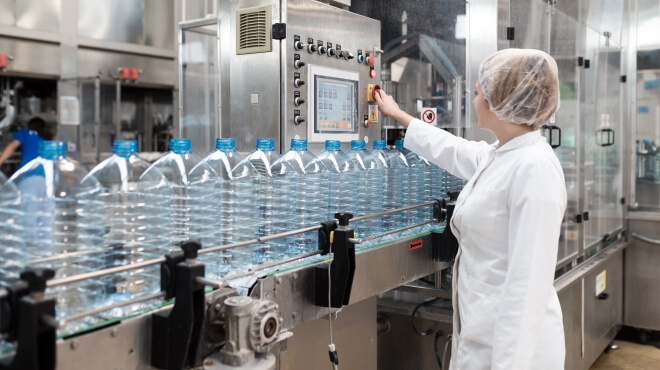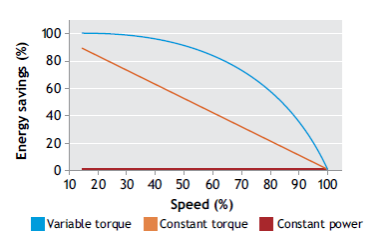We’re wrapping up our series on Variable Speed Drives! Missed out on the first two articles?
In Part 1, we introduced you to the basic principle of operation of a VSD, and touched on their key benefits
In Part 2, we gave an overview of the types of VSD’s, and delve into how a VSD works
In this article, we discuss sizing a VSD, energy savings of a VSD and then we end of by touching on direct online and star-delta starters.
Sizing A VSD
The sizing of a VSD should be done based on the motor current and voltage. This can be obtained from the nameplate of the motor.
1. Full Load Amps
One should look at the full load amps when sizing a VSD. The full load amps are the magnitude of current that the motor will draw when operating at full load and rated speed. When sizing the VSD, it is critical to look at the full load amps plus any additional overload that the application may require.
2. Service Factor Amps
In pumping applications, the pump manufacturer may size the motor to operate in its service factor. This ensures that the pump maintains its flow or head conditions when required. It is important to verify the continuous amps when it is in this overload operation and size the VSD accordingly.
Energy Savings of a VSD
The energy savings that can be made by implementing VSD’s differ according to the load types of the motors. Below are common types used, and the energy savings that can be obtained with the use of VSD’s.
1. Variable Torque
The Variable torque characteristic is usually associated with centrifugal pumps and fans and it is a load type which represents the biggest potential for energy savings. This is true as the power required varies with the speed cubed. This means that a reduction in speed of 80% will result in a 51 % (0.8*0.8*0.8 =0.512) reduction in the power consumed. This represents a significant savings in energy and due to pumps and fans being a third of industrial motors, the use of VSD’s will create a large increase in energy efficiency.
2. Constant Torque
This is a characteristic that is associated with conveyors and air compressors. The power required is directly proportional to speed. This indicates that a reduction in speed by 50% will result in an energy savings of 50%.
3. Constant Power
The Constant Power characteristic is associated with machine tools and centre winders. These are loads that operate at a constant power. A reduction in speed will rarely produce any energy savings, hence VSD’s will not find much application in this case.
Equipment such as Direct Online Starters (DOL), star delta starter, auto transformers as well as soft starters are also used to control rotating machinery. The disadvantage of the equipment listed is that they use a high starting current. This will result in a premature wear and tear on the couplings, squealing belts, and gearboxes, and could even cause damage to both material and product.
When a VSD is used, it will start at a zero current and slowly increase to the load required, depending on the application. This is implemented with a ‘controlled’ and adjustable ramp up and ramp down. As a result of this, there can be a reduction in energy costs, maintenance and down time. A plant will also experience a reduction in their carbon footprint because of the energy savings achieved.
A VSD is often found together with motor-powering equipment. The inverter is used to control the speed of the motor, which is relative to the demand of the application, seamlessly ramping the motor up and down.
An analogy that is often associated with a VSD is that of a car. The VSD performs the function of controlling the motor just like the gears of a car. Operating a motor without the use of a controlled starting would be equivalent to starting the car in a top gear. Also, the lack of control is equivalent to speeding up to a red light and braking sharply within the final few metres, instead of gently slowing down the car before you approach the red light. This will result in the car burning more fuel and allowing it to experience severe stress, causing the ride to be bumpy and uneven.
Direct Online Starters
Direct Online (DOL) starting is used to simply switch the motor on in operation with a direct connection from the power source. It is associated with smaller loads as the starting current can be up to ten times the full load current. A contactor is used to switch power and either a thermal or electronic overload relay is implemented to provide motor protection. It is the simplest and cheapest method of starting a motor, but power supply limitations for the starting current has to be considered.
DOL starters are used in motors where a high rush current does not result in excessive voltage drops in the supply circuit. It is commonly used in small water pumps, conveyor belts, fans, and compressors.
Star-Delta Starters
Certain motors can also be started using the star-delta method. The motor is first connected in a ‘star’ configuration which enables the motor to gather speed without drawing excessive current. When the motor is up to speed it is then connected in a normal ‘delta’ configuration. The method can reduce the starting current demand by up to 30%.
A star-delta starter is used in applications where the required starting current is low and where the line current drawn must be a minimum value. It is not suitable for applications where high start torque delivery is required. If a motor is heavily loaded, there will not be enough torque to accelerate the motor up to speed before switching over to a delta position. A centrifugal compressor is an example of an application that uses a star-delta starter.
Do you need advice on the best VSD for your specific application?
CHAT to our team of electrical experts now!



